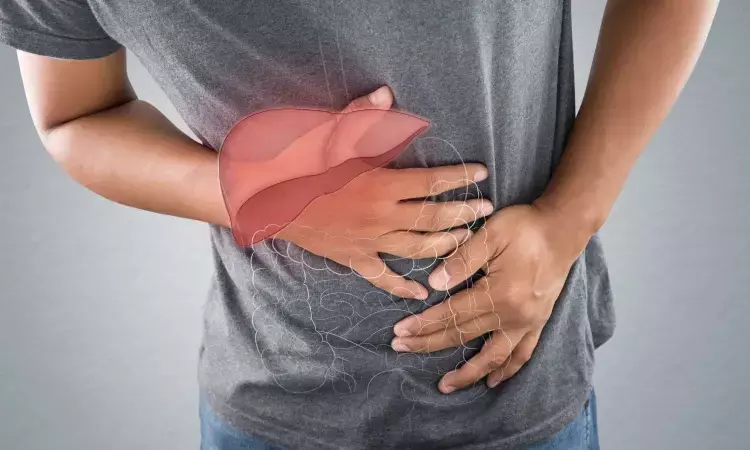- Home
- Medical news & Guidelines
- Anesthesiology
- Cardiology and CTVS
- Critical Care
- Dentistry
- Dermatology
- Diabetes and Endocrinology
- ENT
- Gastroenterology
- Medicine
- Nephrology
- Neurology
- Obstretics-Gynaecology
- Oncology
- Ophthalmology
- Orthopaedics
- Pediatrics-Neonatology
- Psychiatry
- Pulmonology
- Radiology
- Surgery
- Urology
- Laboratory Medicine
- Diet
- Nursing
- Paramedical
- Physiotherapy
- Health news
- Fact Check
- Bone Health Fact Check
- Brain Health Fact Check
- Cancer Related Fact Check
- Child Care Fact Check
- Dental and oral health fact check
- Diabetes and metabolic health fact check
- Diet and Nutrition Fact Check
- Eye and ENT Care Fact Check
- Fitness fact check
- Gut health fact check
- Heart health fact check
- Kidney health fact check
- Medical education fact check
- Men's health fact check
- Respiratory fact check
- Skin and hair care fact check
- Vaccine and Immunization fact check
- Women's health fact check
- AYUSH
- State News
- Andaman and Nicobar Islands
- Andhra Pradesh
- Arunachal Pradesh
- Assam
- Bihar
- Chandigarh
- Chattisgarh
- Dadra and Nagar Haveli
- Daman and Diu
- Delhi
- Goa
- Gujarat
- Haryana
- Himachal Pradesh
- Jammu & Kashmir
- Jharkhand
- Karnataka
- Kerala
- Ladakh
- Lakshadweep
- Madhya Pradesh
- Maharashtra
- Manipur
- Meghalaya
- Mizoram
- Nagaland
- Odisha
- Puducherry
- Punjab
- Rajasthan
- Sikkim
- Tamil Nadu
- Telangana
- Tripura
- Uttar Pradesh
- Uttrakhand
- West Bengal
- Medical Education
- Industry
Steatotic Liver Disease, Sarcopenia, and Fibrosis Linked to Higher Mortality Risk: 15.7-Year Study Findings

China: A recent cohort study spanning 15.7 years has highlighted the significant impact of steatotic liver disease (SLD) subtypes, sarcopenia, and fibrosis on both all-cause and cause-specific mortality. The findings suggest that metabolic dysfunction-associated steatotic liver disease (MASLD), sarcopenia, and advanced fibrosis significantly elevate mortality risks. MASLD alone was associated with a higher risk of all-cause mortality (HR 1.17), but the presence of sarcopenia nearly doubled this risk (HR 2.19).
"The combination of MASLD, sarcopenia, and advanced fibrosis further worsened outcomes (HR 3.41). Additionally, metabolic dysfunction-associated alcohol-related liver disease (MetALD) and other steatotic liver disease subtypes were linked to an increased risk of cancer-specific mortality," the researchers reported in BMC Gastroenterology.
Steatotic liver disease is a newly defined category that includes conditions characterized by excessive fat accumulation in the liver, such as MASLD. Evolving from metabolic dysfunction-associated fatty liver disease (MAFLD), both MAFLD and sarcopenia have been recognized as independent risk factors for mortality. Yeqing Yuan, Department of Endocrinology, Children’s Hospital of Nanjing Medical University, Jiangsu, China, and colleagues aimed to evaluate the impact of SLD subtypes, MAFLD, and sarcopenia on overall and cause-specific mortality.
For this purpose, the researchers analyzed data from 6,543 individuals identified from the National Health and Nutrition Examination Survey (1999–2006) using the latest Linked Mortality file. Hepatic steatosis, advanced fibrosis, and sarcopenia were assessed using laboratory- and anthropometry-based fatty liver index, fibrosis-4 index, and dual-energy X-ray absorptiometry-based appendicular skeletal muscle mass index, respectively. The associations between SLD subtypes, MAFLD, and sarcopenia with mortality were evaluated using the weighted Cox proportional hazards model.
The study led to the following findings:
- Over a mean follow-up of 15.7 years, 1,567 deaths (16.7%) were recorded, including 494 (4.9%) from cardiovascular diseases and 372 (4.1%) from cancer.
- The all-cause mortality rates for different conditions were: MAFLD (21.0%), MASLD (19.8%), MetALD (30.2%), other etiology SLD (30.9%), MASLD without sarcopenia (19.2%), and MASLD with sarcopenia (75.5%).
- MAFLD was linked to an increased risk of all-cause mortality (HR 1.26).
- MASLD was associated with all-cause mortality (HR 1.17), but the significance disappeared after adjusting for metabolic risk factors.
- MetALD and other etiology SLD showed a stronger association with all-cause mortality (HR 1.83; HR 2.50, respectively).
- Both MetALD and other etiology SLD were predominantly linked to cancer-specific mortality (HR 2.42; HR 2.49, respectively).
- MASLD with sarcopenia nearly doubled the risk of all-cause mortality (HR 2.19, 95% CI 1.37–3.49).
- The presence of advanced fibrosis alongside MASLD and sarcopenia further increased mortality risk (HR 3.41).
The researchers found that MAFLD was linked to an increased risk of all-cause mortality, while MASLD did not show a significant association after adjusting for multiple risk factors. Their analysis highlighted strong associations of MetALD and other etiology SLD with all-cause and cancer-specific mortality. Additionally, they observed that MASLD, when combined with sarcopenia or MASLD-related advanced fibrosis, further elevated mortality risk.
"Their findings suggest that the SLD definition helps identify a more homogeneous group with metabolically driven hepatic steatosis at higher mortality risk. We emphasize the need for future studies to investigate the liver-muscle interaction in MASLD and MASLD-related advanced fibrosis, and the molecular mechanisms linking sarcopenia and MASLD, to inform targeted interventions," the researchers concluded.
Reference:
Liang, Y., Ye, X., Pan, M. et al. Impact of steatotic liver disease subtypes, sarcopenia, and fibrosis on all-cause and cause-specific mortality: a 15.7-year cohort study. BMC Gastroenterol 25, 75 (2025). https://doi.org/10.1186/s12876-025-03661-0
Dr Kamal Kant Kohli-MBBS, DTCD- a chest specialist with more than 30 years of practice and a flair for writing clinical articles, Dr Kamal Kant Kohli joined Medical Dialogues as a Chief Editor of Medical News. Besides writing articles, as an editor, he proofreads and verifies all the medical content published on Medical Dialogues including those coming from journals, studies,medical conferences,guidelines etc. Email: drkohli@medicaldialogues.in. Contact no. 011-43720751


